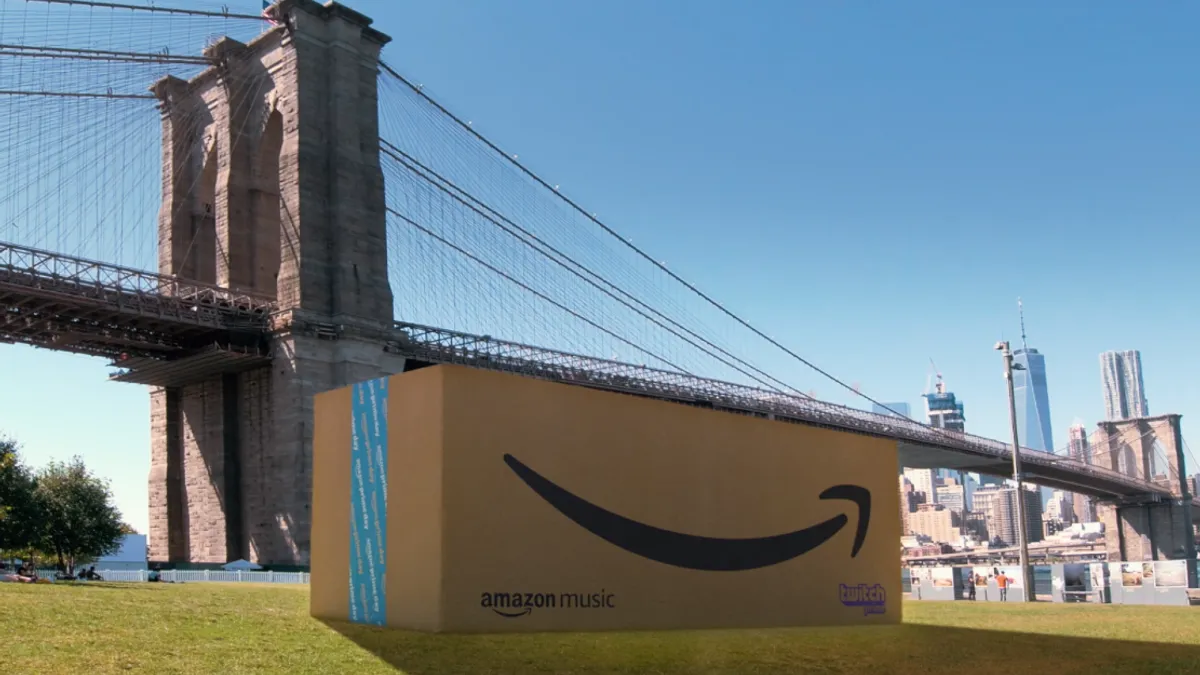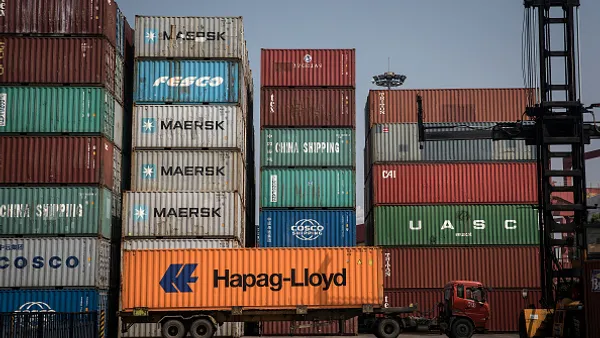Dive Brief:
-
Amazon on Thursday reported that second quarter product sales rose to $50.2 billion from $35.9 billion in the year-ago quarter. Sales of services, which include advertising, subscription services and fees from Marketplace sellers, rose to $38.7 billion from $27.5 billion a year ago. Overall net sales, which includes the company's profitable AWS cloud unit, rose 40% to $88.9 billion from $63.4 billion last year.
-
The e-commerce giant's cost of sales also rose, to $52.7 billion from $36.3 billion a year ago. Fulfillment costs grew to $13.8 billion from $9.3 billion in the year-ago period.
-
Net income in the quarter increased to $5.2 billion from $2.6 billion last year, according to a company press release.
Dive Insight:
As consumers avoided or were kept from stores, Amazon reaped the benefits in the form of holiday season-level demand, both for its products and its Prime membership, CFO Brian Olsavsky told analysts Thursday.
Calling the period "another highly unusual quarter," he said the e-commerce giant began to see "a significant increase in customer demand beginning in early March," and that demand remained up throughout the following quarter. That included continuing strong demand for lower-margin grocery and consumable items, though demand for discretionary items picked up in May, he said.
Online grocery sales tripled, while video watching doubled, he noted. Prime sign-ups and renewals are up, and Prime members are buying more, and more frequently, he said, without giving details. Sales from subscription services, which includes Prime fees, rose 29%, per the release.
The demand surge, plus restrictions on workers to ensure their safety against the pandemic, constrained the company's fulfillment capacity and its ability to deliver on its Prime two-day delivery standard, much less its year-old ambition to make that one day. The company altered more than 150 of its processes to enable social distancing and spent time and money to bring on more than 175,000 new employees hired to meet the higher demand. The $4 billion that went toward that included buying personal protective equipment for employees and cleaning the facilities, Olsavsky said.
About 125,000 of those employees are being onboarded as full-time workers, and the company is now investing to expand its fulfillment square footage by 50% this year, with most of the new facilities up and running by the end of the third quarter or into the fourth quarter, he said. For now, while Prime shipping in one or two days has been restored to some extent, he said he couldn't predict when the goal of speeding up Prime delivery can be achieved.
"We are working very hard to get faster shipments," he said. "But again, first priority is definitely keeping employees safe, and second is increasing our capacity."
Also on hold is the company's annual Prime Day sale, normally held in July, which will take place some time in the fourth quarter, Olsavsky said.
He cautioned that it's hard to know how elevated demand will remain. But if the company's pandemic-related challenges promise to be temporary, much of its gains may not be. "While we acknowledge the exceptional nature of the tailwinds driving near-term results, we expect [Amazon] share gains will likely ratchet permanently higher as the pandemic drives/ingrains new consumer habits," Wells Fargo analysts led by Brian Fitzgerald said in emailed comments.
Still, rivals are also taking note of new consumer patterns, leaving no room for complacency, warns GlobalData Retail Managing Director Neil Saunders.
"Some of the growth has been generated by the exceptional nature of the pandemic which resulted in the wholesale closure of physical non-essential stores and consumers staying home. This dynamic will wane and so too will some of Amazon's growth and market share gains made this quarter," he said in emailed comments. "The pandemic has also awoken many other retailers to the investments they need to make in digital and they are now taking steps to take advantage of the channel, including Walmart with its Walmart+ scheme. Longer term this means there will be more, not less, competition for Amazon."














